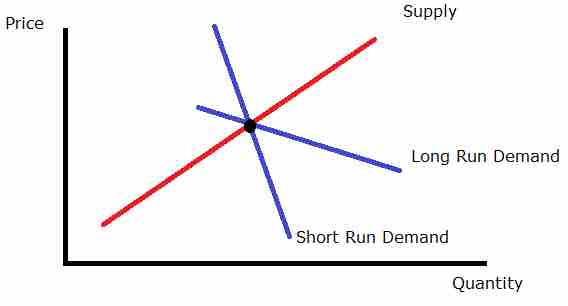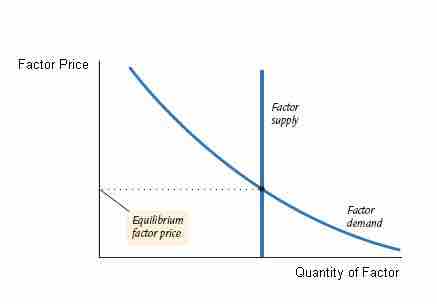In economics, elasticity is a summary measure of how the supply or demand of a particular good is influenced by changes in price. Elasticity is defined as a proportionate change in one variable over the proportionate change in another variable:
The price elasticity of supply (PES) is the measure of the responsiveness in quantity supplied (QS) to a change in price for a specific good (% Change QS / % Change in Price). There are numerous factors that directly impact the elasticity of supply for a good including stock, time period, availability of substitutes, and spare capacity. The state of these factors for a particular good will determine if the price elasticity of supply is elastic or inelastic in regards to a change in price.
The price elasticity of supply has a range of values:
- PES > 1: Supply is elastic.
- PES < 1: Supply is inelastic.
- PES = 0: The supply curve is vertical; there is no response of demand to prices. Supply is "perfectly inelastic."
- PES =
$\infty$ (i.e., infinity): The supply curve is horizontal; there is extreme change in demand in response to very small change in prices. Supply is "perfectly elastic."
Inelastic goods are often described as necessities. A shift in price does not drastically impact consumer demand or the overall supply of the good because it is not something people are able or willing to go without. Examples of inelastic goods would be water, gasoline, housing, and food.
Elastic goods are usually viewed as luxury items. An increase in price for an elastic good has a noticeable impact on consumption. The good is viewed as something that individuals are willing to sacrifice in order to save money. An example of an elastic good is movie tickets, which are viewed as entertainment and not a necessity.
The price elasticity of supply is determined by:
- Number of producers: ease of entry into the market.
- Spare capacity: it is easy to increase production if there is a shift in demand.
- Ease of switching: if production of goods can be varied, supply is more elastic.
- Ease of storage: when goods can be stored easily, the elastic response increases demand.
- Length of production period: quick production responds to a price increase easier.
- Time period of training: when a firm invests in capital the supply is more elastic in its response to price increases.
- Factor mobility: when moving resources into the industry is easier, the supply curve in more elastic.
- Reaction of costs: if costs rise slowly it will stimulate an increase in quantity supplied. If cost rise rapidly the stimulus to production will be choked off quickly.
The result of calculating the elasticity of the supply and demand of a product according to price changes illustrates consumer preferences and needs . The elasticity of a good will be labelled as perfectly elastic, relatively elastic, unit elastic, relatively inelastic, or perfectly inelastic.

Price elasticity over time
This graph illustrates how the supply and demand of a product are measured over time to show the price elasticity.

Perfectly Inelastic Supply
A graphical representation of perfectly inelastic supply.